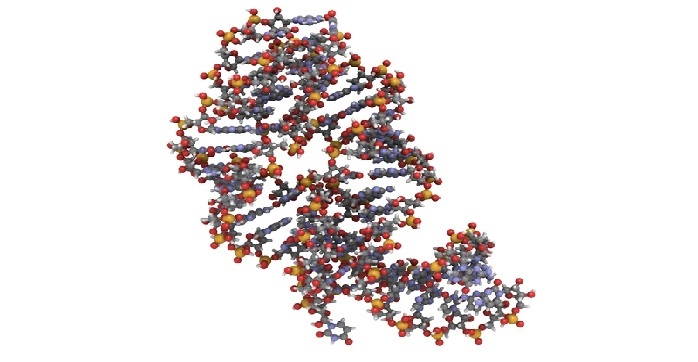
 Data Structure
Data Structure Networking
Networking RDBMS
RDBMS Operating System
Operating System Java
Java MS Excel
MS Excel iOS
iOS HTML
HTML CSS
CSS Android
Android Python
Python C Programming
C Programming C++
C++ C#
C# MongoDB
MongoDB MySQL
MySQL Javascript
Javascript PHP
PHP
- Selected Reading
- UPSC IAS Exams Notes
- Developer's Best Practices
- Questions and Answers
- Effective Resume Writing
- HR Interview Questions
- Computer Glossary
- Who is Who
Riboswitches and RNA World
Introduction
Riboswitches and the RNA world are two fascinating topics in the field of molecular biology. Riboswitches are RNA molecules that can change their conformation in response to the binding of a specific small molecule. RNA world, on the other hand, is a hypothesis that suggests that life on Earth might have originated from RNA molecules, which acted as both genetic material and enzymes. In this article, we will discuss these two topics in detail, their significance in biology, and their potential applications.
Riboswitches
Riboswitches are regulatory elements present in the untranslated regions (UTRs) of certain messenger RNAs (mRNAs). These RNA molecules can change their conformation upon binding to a specific small molecule or ligand, which can either promote or inhibit gene expression. The ligand binding induces a structural change in the RNA, which affects the accessibility of the ribosome binding site, thereby controlling the translation of the mRNA. Riboswitches are commonly found in bacteria and some eukaryotes.

Riboswitches are classified into two main types: the aptamer and expression platform. Aptamer riboswitches directly bind the ligand, whereas the expression platform riboswitches regulate gene expression by changing the structure of the mRNA. Riboswitches have been identified for a variety of molecules, such as amino acids, cofactors, and antibiotics. Riboswitches have several advantages over protein-based regulatory elements, such as lower cost and simpler regulation.
RNA World
RNA world is a hypothesis that suggests that life on Earth might have originated from RNA molecules. The hypothesis proposes that RNA acted as both genetic material and enzymes, allowing self-replication and chemical reactions necessary for life. The RNA world hypothesis was first proposed by Walter Gilbert in the 1980s and has since been supported by numerous studies.
RNA is a versatile molecule that can fold into complex structures and perform catalytic functions. RNA can act as a template for replication, as well as a catalyst for chemical reactions. RNA molecules can also form complexes with other molecules, such as proteins and lipids, which could have led to the formation of the first cells.
The RNA world hypothesis is supported by several pieces of evidence. First, RNA can catalyze many chemical reactions, including the synthesis of other RNA molecules. Second, RNA can self-replicate through complementary base pairing. Third, RNA can form complex structures, including ribosomes, which are responsible for protein synthesis in modern cells.
Applications
Riboswitches and the RNA world hypothesis have several potential applications in the field of molecular biology. Riboswitches can be used as biosensors to detect specific molecules in the environment. For example, riboswitches have been engineered to detect the presence of antibiotics in bacterial cultures, allowing for the rapid screening of antibiotic-resistant strains. Riboswitches can also be used to control gene expression in synthetic biology applications, allowing for the precise regulation of gene expression.
The RNA world hypothesis has inspired several studies aimed at understanding the origin of life on Earth. By investigating the properties of RNA, scientists hope to gain insights into the conditions necessary for the emergence of life. The RNA world hypothesis has also led to the development of new RNA-based therapeutics, such as ribozymes, which are RNA molecules that can act as enzymes and catalyze specific chemical reactions.
Conclusion
Riboswitches and the RNA world hypothesis are two fascinating topics in the field of molecular biology. Riboswitches are RNA molecules that can change their conformation in response to the binding of a specific small molecule, whereas the RNA world hypothesis suggests that life on Earth might have originated from RNA molecules. Both topics have significant implications for the study of biology and have potential applications in the fields of biosensors, and synthetic biology.
FAQs
Q1. What are riboswitches?
Ans. Riboswitches are regulatory elements found in the untranslated regions (UTRs) of certain messenger RNAs (mRNAs) that can change their conformation upon binding to a specific small molecule or ligand, which can either promote or inhibit gene expression.
Q2. What is the RNA world hypothesis?
Ans. The RNA world hypothesis suggests that life on Earth might have originated from RNA molecules, which acted as both genetic material and enzymes. This hypothesis proposes that RNA was the first self-replicating molecule on Earth.
Q3. How do riboswitches work?
Ans. Riboswitches work by binding to a specific small molecule or ligand, which induces a structural change in the RNA molecule. This structural change affects the accessibility of the ribosome binding site, which can either promote or inhibit gene expression.
Q4. What are the advantages of riboswitches over protein-based regulatory elements?
Ans. Riboswitches have several advantages over protein-based regulatory elements, such as lower cost, simpler regulation, and the ability to control gene expression in a more precise and targeted manner.
Q5. What evidence supports the RNA world hypothesis?
Ans. The RNA world hypothesis is supported by several pieces of evidence, including the fact that RNA can catalyze many chemical reactions, self-replicate through complementary base pairing, and form complex structures, such as ribosomes.

